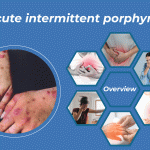Blinatumomab (Blincyto), a CD19 x CD3 bispecific T-cell engager (BiTE) antibody, stands at the forefront of a paradigm shift in treating relapsed or refractory B-cell acute lymphoblastic leukemia (R/R B-ALL). Despite initial remissions with chemotherapy, up to two-thirds of adults face relapse, with limited responses to salvage therapies or stem cell transplants. The dire need for effective and tolerable treatments led to blinatumomab’s emergence, marking a pivotal moment in R/R B-ALL therapy.
Approved in the last six years, blinatumomab has reshaped patient outcomes, demonstrating improved survival rates compared to conventional chemotherapy in large clinical trials. It’s notably the first therapy approved for measurable residual disease (MRD) in addition to relapsed or refractory disease, spanning both Philadelphia chromosome-negative and positive B-ALL.
Its unique mechanism, engaging CD19-positive B-cells and CD3-positive T-cells, triggers T-cell mediated lysis and proliferation. This specificity allows blinatumomab to target B-cell lineage cancers with minimal impact on stem cells lacking CD19 expression.
Early trials showcased its efficacy, highlighting its ability to prevent tumor growth and achieve remissions, leading to further studies and subsequent FDA approvals. However, its usage is not without challenges.Adverse effects, such as cytokine release syndrome (CRS) and neurotoxicity, can occur, warranting vigilant monitoring and management strategies, including stepwise dosing and pre-treatment with dexamethasone.
Clinical investigations are delving deeper, exploring blinatumomab’s role in frontline treatment, resistance mechanisms, optimal MRD levels, and real-world patient outcomes outside controlled trials. These ongoing studies aim to address critical clinical queries, paving the way for informed therapeutic strategies.
Blinatumomab’s arrival has introduced a beacon of hope for patients facing R/R B-ALL, offering a targeted, immunotherapeutic approach that’s changing the treatment landscape. As research continues to unfold, its place in the continuum of care and its potential in improving long-term outcomes remain subjects of great interest and ongoing exploration.






